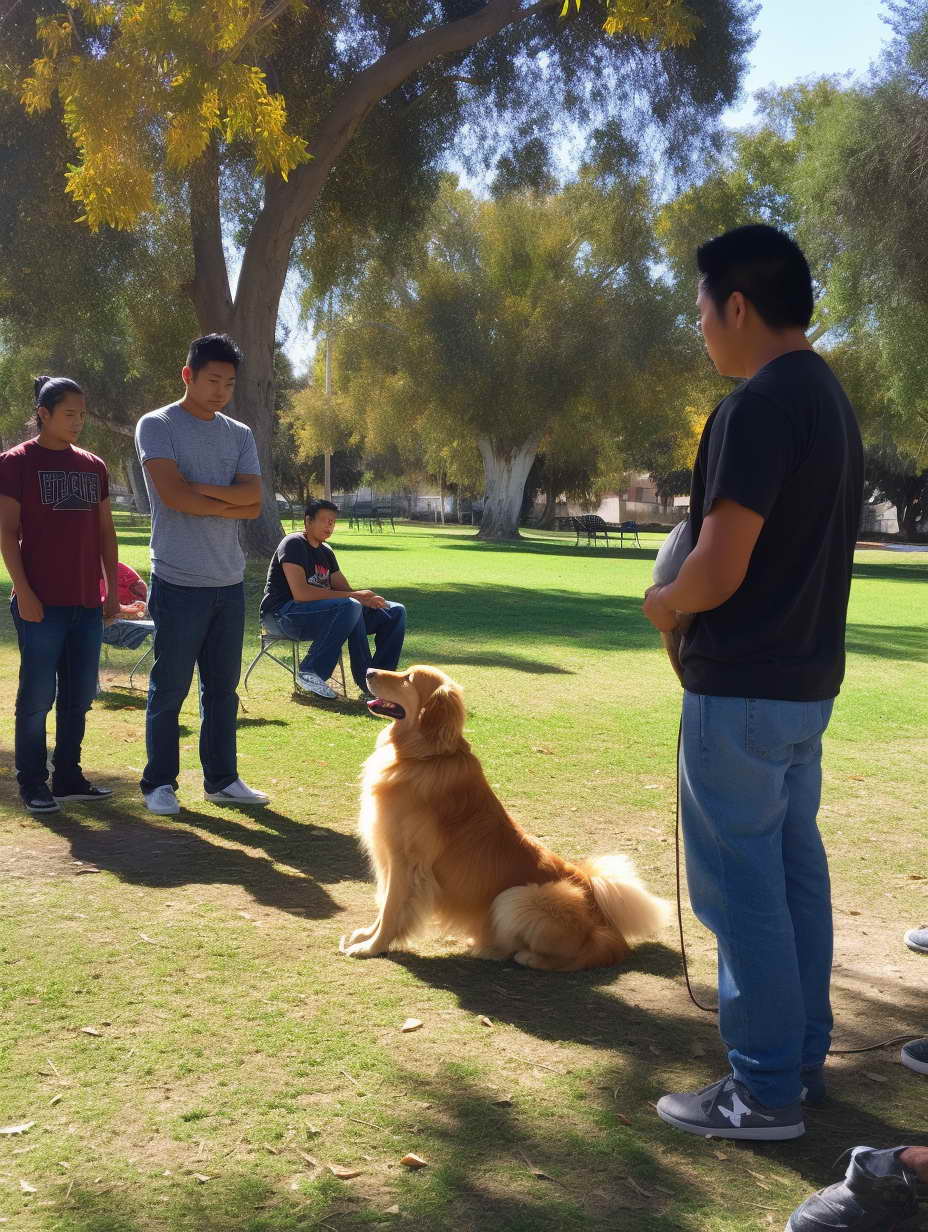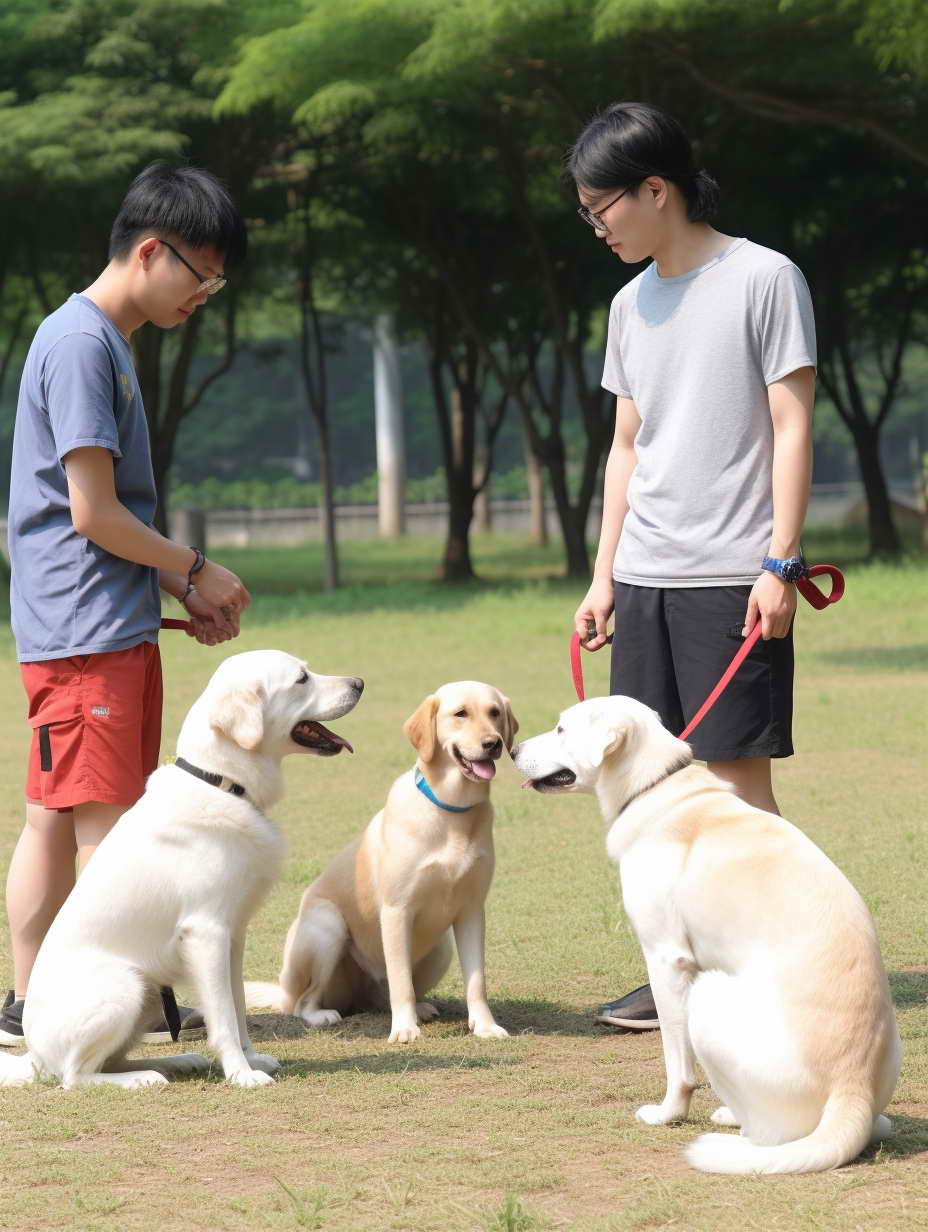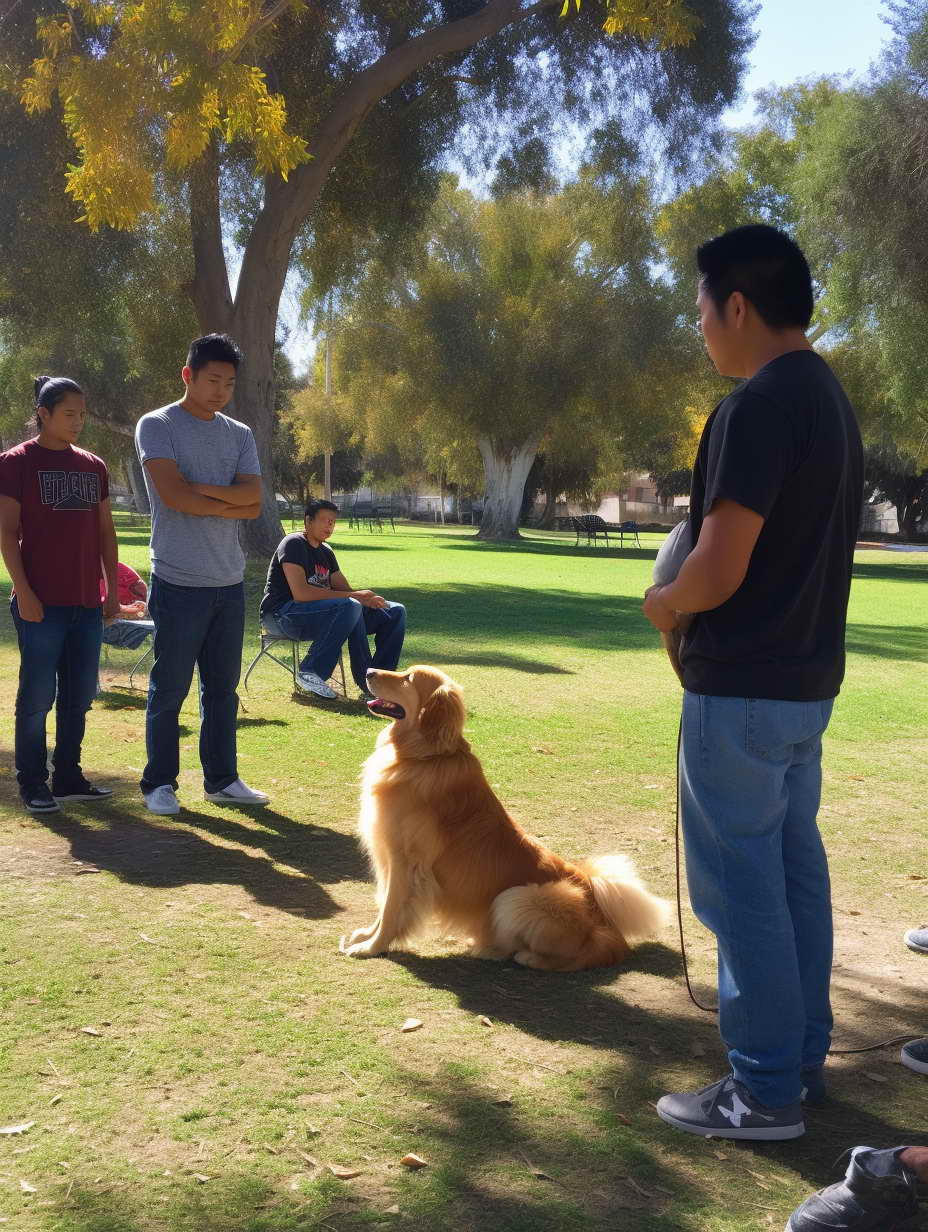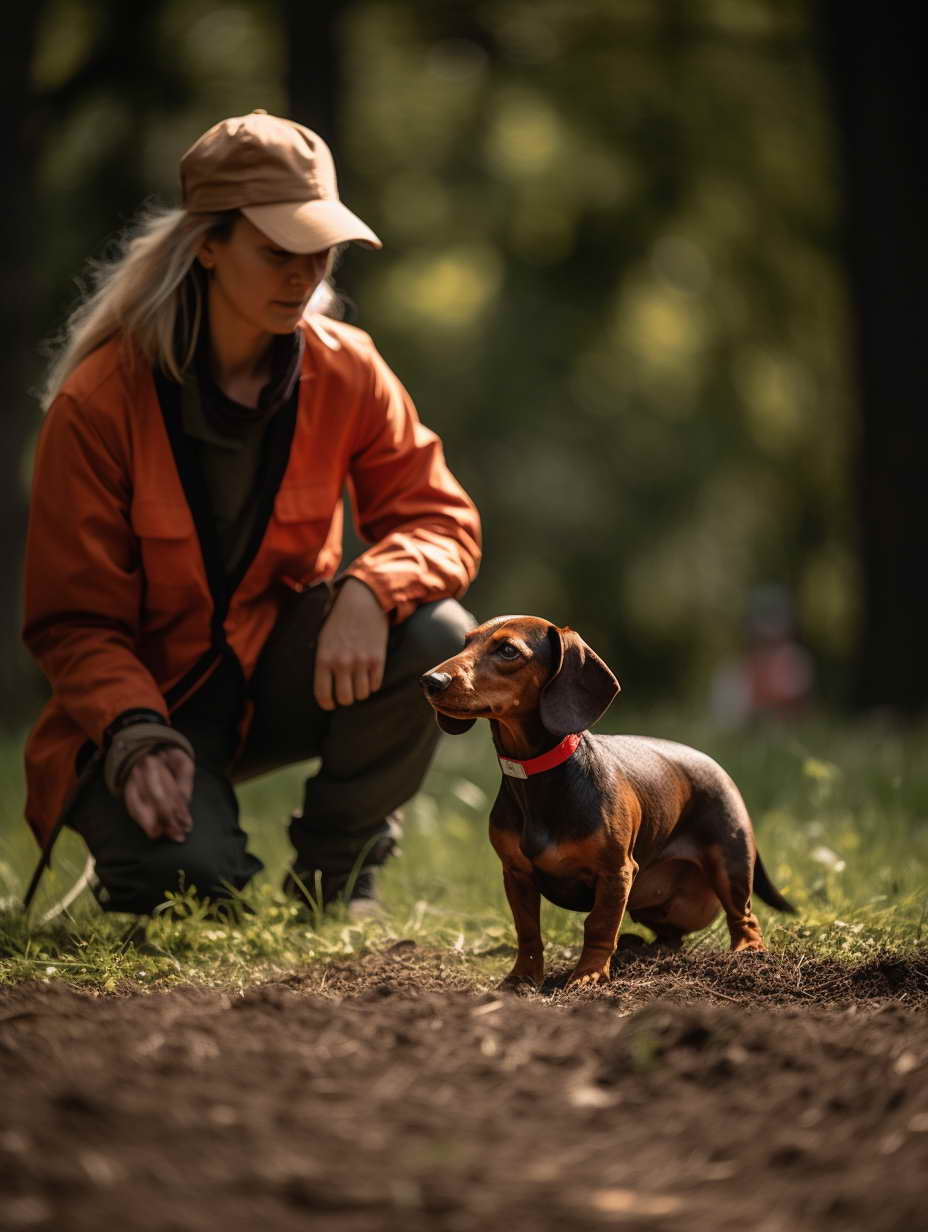How To Get Into Dog Training: A Comprehensive Guide
Dog training is not just about teaching your furry companion tricks; it’s about building a strong bond and ensuring a harmonious coexistence. If you’re passionate about dogs and eager to make a difference in their lives, you’ve come to the right place. In this comprehensive guide, we’ll explore the ins and outs of how to get into dog training, from the fundamentals to becoming a true expert.
The Path to Becoming a Dog Trainer
Becoming a dog trainer is an exciting and rewarding journey that involves not only a deep love for dogs but also a commitment to continuous learning and professional development. In this section, we will explore the path to becoming a dog trainer in greater detail, providing you with a roadmap to follow if you aspire to embark on this fulfilling career.
Education and Certification
Formal Education
While there are no strict educational requirements to become a dog trainer, obtaining formal education in animal behavior, psychology, or a related field can be immensely beneficial. Many aspiring dog trainers pursue degrees in fields such as animal science, veterinary medicine, or psychology. These educational backgrounds provide a solid foundation in understanding the intricacies of canine behavior.
Specialized Courses
To gain specific knowledge and skills in dog training, enrolling in specialized courses is highly recommended. Look for reputable dog training schools or programs that offer a comprehensive curriculum and hands-on training. These courses cover topics such as canine communication, training techniques, and behavior modification.
Certification
Certification is not mandatory but can significantly enhance your credibility as a dog trainer. Organizations like the International Association of Canine Professionals (IACP) and the Association of Professional Dog Trainers (APDT) offer certification programs. Earning a certification demonstrates your commitment to professional standards and can help attract clients.

Apprenticeship Opportunities
Learning by Doing
One of the most valuable ways to gain practical experience in dog training is through apprenticeships. Working closely with experienced trainers allows you to observe, assist, and gradually take on training responsibilities. This hands-on experience is invaluable in honing your skills and understanding how to work effectively with dogs and their owners.
Finding a Mentor
Seeking out a mentor in the dog training industry can be a game-changer. A mentor can provide guidance, share their expertise, and offer insights into the nuances of the profession. Building a mentor-mentee relationship can open doors to opportunities and help you refine your training techniques.
Building a Portfolio
During your apprenticeship, document your experiences, successes, and challenges. Building a portfolio of your work as a trainee can showcase your progress and serve as evidence of your capabilities when you decide to launch your own dog training business.
Building Your Expertise
Continuous Learning
The world of dog training is dynamic, with new techniques and methods constantly emerging. To stay at the forefront of the field, commit to lifelong learning. Attend seminars, workshops, and conferences conducted by experts in the industry. These events provide opportunities to learn, network, and stay updated on the latest trends.
Understanding Canine Psychology
Deepen your understanding of canine psychology. Dogs have unique behaviors, instincts, and communication styles. The more you comprehend their thought processes, the better equipped you’ll be to train them effectively and address behavioral issues.
Specialization
Consider specializing in specific areas of dog training, such as obedience, agility, or therapy dog training. Specialization can set you apart in the market and allow you to cater to the diverse needs of dog owners.

Building a Strong Foundation
Before embarking on a successful career as a dog trainer, it’s essential to establish a strong foundation of knowledge and skills. This section will guide you through the crucial steps in building that solid base, ensuring you are well-prepared to train dogs effectively and help them become well-behaved companions.
Understanding Canine Behavior
Canine Psychology
To become an effective dog trainer, you must first delve into the fascinating world of canine psychology. Understanding how dogs think, communicate, and interpret the world around them is fundamental. Key aspects of canine psychology include:
- Pack Instinct: Dogs are pack animals by nature, and they thrive in environments where they feel they belong to a group. Understanding pack dynamics is essential for successful training.
- Learning Styles: Dogs have different learning styles, which may include visual, auditory, or kinesthetic preferences. Recognizing these preferences can help tailor your training methods to individual dogs.
- Body Language: Dogs communicate primarily through body language. Learning to read and interpret their signals is crucial for effective communication.
- Emotional Responses: Dogs experience emotions such as fear, joy, and anxiety. Recognizing these emotions and addressing them appropriately is vital in training.
Basic Training Techniques
Positive Reinforcement
Positive reinforcement is a cornerstone of effective dog training. This technique involves rewarding dogs for good behavior with treats, praise, or toys. It encourages dogs to repeat the desired behavior. When employing positive reinforcement:
- Use treats or toys that your dog finds highly motivating.
- Be consistent in rewarding the behavior immediately after it occurs.
- Pair verbal praise with rewards to reinforce the connection between the behavior and the reward.
Clicker Training
Clicker training is a specific form of positive reinforcement that employs a distinct sound, typically from a small handheld device called a clicker, to mark the desired behavior. Key principles of clicker training include:
- Timing is crucial; the click must immediately follow the desired behavior.
- The clicker serves as a precise marker, signaling to the dog exactly which behavior is being rewarded.
- Clicker training can be highly effective for teaching complex behaviors and tricks.
Reward-Based Training
Reward-based training encompasses various rewards, not just food or toys. It can also include verbal praise, petting, or access to preferred activities. The key is to find what motivates each dog and use those rewards strategically.
Communication Skills
Verbal Cues
Clear and consistent verbal cues are essential in dog training. Use short, distinct commands such as “sit,” “stay,” and “heel.” When giving commands:
- Use a confident and clear tone of voice.
- Repeat the command consistently until the dog responds.
- Avoid shouting or using overly harsh tones.
Non-Verbal Communication
Dogs rely heavily on non-verbal cues and body language. When working with dogs:
- Use hand signals in conjunction with verbal cues to reinforce understanding.
- Maintain good posture and body language to convey confidence and assertiveness.
- Pay attention to the dog’s body language to gauge its emotional state and response to training.

Setting Up Your Dog Training Business
Launching and running a dog training business can be a fulfilling endeavor, allowing you to turn your passion for dogs into a thriving career. In this section, we’ll explore the essential steps and considerations for setting up your dog training business.
Business Plan
Define Your Services
Start by outlining the services you plan to offer. These could include:
- Basic Obedience Training: Teaching fundamental commands like “sit,” “stay,” and “come.”
- Behavior Modification: Addressing specific behavioral issues such as aggression or anxiety.
- Puppy Training: Helping puppies develop good habits and socialization skills.
- Specialized Training: Offering advanced training in areas like agility, therapy, or service dog training.
Target Market
Identify your target market. Consider factors like location, demographics, and the specific needs of dog owners in your area. Understanding your audience will help you tailor your services and marketing strategies.
Competition Analysis
Research local competitors to understand their strengths and weaknesses. Differentiate your business by offering unique services or a more personalized approach.
Marketing Strategy
Develop a comprehensive marketing strategy that includes online and offline tactics. Consider building a professional website, utilizing social media, and networking with local pet-related businesses.
Legal Considerations
Business Structure
Choose a legal structure for your business, such as a sole proprietorship, LLC, or corporation. Consult with legal and financial professionals to determine the best option for your situation.
Licenses and Permits
Check local and state regulations regarding dog training businesses. You may need specific licenses or permits to operate legally.
Insurance
Obtain liability insurance to protect your business in case of accidents or injuries during training sessions.
Marketing and Branding
Brand Identity
Create a memorable brand identity for your dog training business. This includes designing a professional logo, choosing a color scheme, and creating a consistent visual identity.
Online Presence
Build a strong online presence through a professional website and active social media profiles. Use these platforms to showcase your expertise, share training tips, and engage with potential clients.
Client Testimonials
Encourage satisfied clients to leave reviews and testimonials on your website and social media. Positive feedback builds trust and credibility.
Pricing and Services
Pricing Strategy
Determine your pricing structure based on factors such as your location, competition, and the services you offer. Consider offering package deals or discounts for multiple sessions.
Service Packages
Offer a variety of service packages to cater to different client needs. For example, you could provide basic obedience training packages, behavior modification packages, and puppy training packages.
Scheduling and Availability
Establish clear scheduling and availability policies. Ensure that clients can easily book sessions and understand your cancellation policy.
Continuing Education
Stay Informed
The field of dog training is continually evolving, with new techniques and research emerging. Stay informed by attending workshops, seminars, and industry conferences.
Certification
Consider obtaining additional certifications or advanced training to demonstrate your commitment to excellence and stay competitive in the market.

Advanced Dog Training Techniques
Once you’ve built a solid foundation in dog training, it’s time to explore advanced techniques that can take your skills to the next level. This section will delve into the intricacies of advanced dog training methods, offering insights into specialized areas of training.
Specialized Training
Working Dogs
Training working dogs, such as police K9 units, search and rescue teams, or service dogs, requires specialized skills. These dogs are often taught advanced tasks, including apprehension, tracking, and detection. Key considerations for training working dogs include:
- Task-Specific Training: Identify the specific tasks the dog will perform and tailor training accordingly.
- Handler Communication: Work closely with the dog’s handler to ensure seamless teamwork.
- Realistic Scenarios: Simulate real-life situations to prepare the dog for on-the-job challenges.
Therapy Dogs
Therapy dogs provide comfort and companionship to individuals in hospitals, nursing homes, and other healthcare settings. To train therapy dogs:
- Temperament Evaluation: Assess a dog’s temperament to ensure they are well-suited for therapy work.
- Socialization: Expose the dog to various environments, people, and situations to build confidence.
- Gentle and Calm Behavior: Train therapy dogs to remain calm and gentle in stressful situations.
Search and Rescue Dogs
Search and rescue dogs play a vital role in locating missing persons in various scenarios. Training these dogs requires:
- Scent Detection: Teach dogs to recognize and track human scents over long distances.
- Obedience in Chaotic Environments: Train dogs to remain obedient and focused in challenging, high-stress situations.
- Effective Communication: Work closely with handlers to ensure clear communication during search missions.
Behavior Modification
Aggression Rehabilitation
Dealing with aggressive behavior in dogs requires a deep understanding of the underlying causes and appropriate interventions. Advanced techniques for aggression rehabilitation include:
- Desensitization and Counterconditioning: Gradually expose the dog to triggers while rewarding calm behavior.
- Positive Reinforcement: Emphasize positive experiences to change the dog’s emotional response to aggression triggers.
- Mediation: In some cases, medication prescribed by a veterinarian may complement behavior modification.
Fear and Anxiety
Dogs suffering from fear and anxiety can benefit from advanced training techniques that address their emotional well-being. These techniques include:
- Desensitization: Gradually introduce the dog to fear-inducing stimuli at a manageable pace.
- Counterconditioning: Replace fearful responses with positive associations.
- Therapeutic Exercises: Incorporate exercises that build the dog’s confidence and reduce anxiety.
Compulsive Behaviors
Some dogs exhibit compulsive behaviors like excessive digging, chasing their tail, or repetitive movements. Advanced training for compulsive behaviors involves:
- Identifying Triggers: Identify what triggers the compulsive behavior and remove or modify those triggers.
- Enrichment and Mental Stimulation: Provide mental challenges and engage the dog’s mind to redirect their focus.
- Medication: In severe cases, medication prescribed by a veterinarian may be necessary to manage compulsive behaviors.
Agility and Sports Training
Agility
Agility training is an exhilarating sport that involves dogs navigating obstacle courses with precision and speed. Advanced agility training includes:
- Complex Sequences: Create intricate sequences of obstacles to challenge the dog’s agility and problem-solving skills.
- Handler Communication: Enhance communication between the dog and the handler for seamless navigation of the course.
- Competitive Training: Prepare dogs and handlers for competitive agility events and competitions.
Canine Sports
Explore various canine sports, such as flyball, dock diving, or competitive obedience. These sports provide both physical and mental stimulation for dogs and can be a fun way to bond. Advanced training in canine sports includes:
- Specialized Training: Tailor training to the specific requirements of the chosen sport.
- Conditioning and Fitness: Focus on the dog’s physical conditioning to excel in athletic competitions.
- Consistency and Precision: Fine-tune the dog’s performance for competitive events.

Building Trust and Reputation
In the world of dog training, building trust and a positive reputation is not only essential but also a continuous process. Clients are more likely to seek your services and refer you to others if they trust your abilities and believe in your expertise. This section explores strategies for establishing trust and cultivating a stellar reputation in the dog training industry.
Client Relationships
Effective Communication
Effective communication is the bedrock of any successful client-trainer relationship. Here’s how you can foster good communication:
- Active Listening: Listen attentively to your client’s concerns, questions, and goals.
- Clear Expectations: Set clear expectations regarding training outcomes, timelines, and what clients can expect from your services.
- Regular Updates: Keep clients informed about their dog’s progress during training.
Personalization
Tailor your training approach to meet the unique needs of each client and their dog. Recognize that one size does not fit all, and personalized training plans are more likely to yield positive results.
Patience and Empathy
Clients may come to you with a variety of concerns and frustrations related to their dogs’ behavior. Show patience and empathy by understanding their perspective and addressing their concerns with compassion.
Reviews and Testimonials
Encourage Feedback
Encourage clients to provide feedback after training sessions. Constructive feedback can help you improve your services and demonstrate your commitment to continuous improvement.
Showcase Success Stories
Highlight success stories on your website and social media platforms. Share before-and-after videos or photos, along with testimonials from satisfied clients. These stories serve as powerful endorsements of your expertise.
Online Reputation Management
Monitor online review platforms and respond professionally to both positive and negative reviews. Your responses to negative reviews can demonstrate your commitment to resolving issues and improving your services.
Continuing Education
Stay Current
Stay up-to-date with the latest developments in dog training, behavior modification, and canine psychology. Continuously improving your knowledge and skills enhances your credibility as a professional.
Attend Seminars and Workshops
Participate in seminars, workshops, and conferences conducted by experts in the field. These events not only provide valuable insights but also offer networking opportunities to connect with fellow professionals.
Certifications and Accreditations
Consider obtaining certifications and accreditations from reputable organizations. These credentials demonstrate your commitment to industry standards and best practices.
Community Involvement
Volunteering
Engage in community outreach by volunteering your services at local animal shelters, rescue organizations, or schools. This not only gives back to the community but also showcases your expertise and dedication.
Educational Workshops
Offer educational workshops or seminars for the community on dog training and responsible pet ownership. Sharing your knowledge can position you as a trusted authority in your area.
Collaborations
Collaborate with other pet professionals, such as veterinarians, groomers, or pet sitters. Building relationships within the pet industry can lead to referrals and partnerships.
Continuing Education
Stay at the forefront of the industry by attending seminars and workshops.
Embarking on the journey of becoming a dog trainer is a rewarding and fulfilling endeavor. By understanding the basics, gaining expertise, and building a strong reputation, you can create a meaningful impact on the lives of dogs and their owners. So, take the first step, and let your love for dogs guide you towards a successful career in dog training.

Leave a Reply